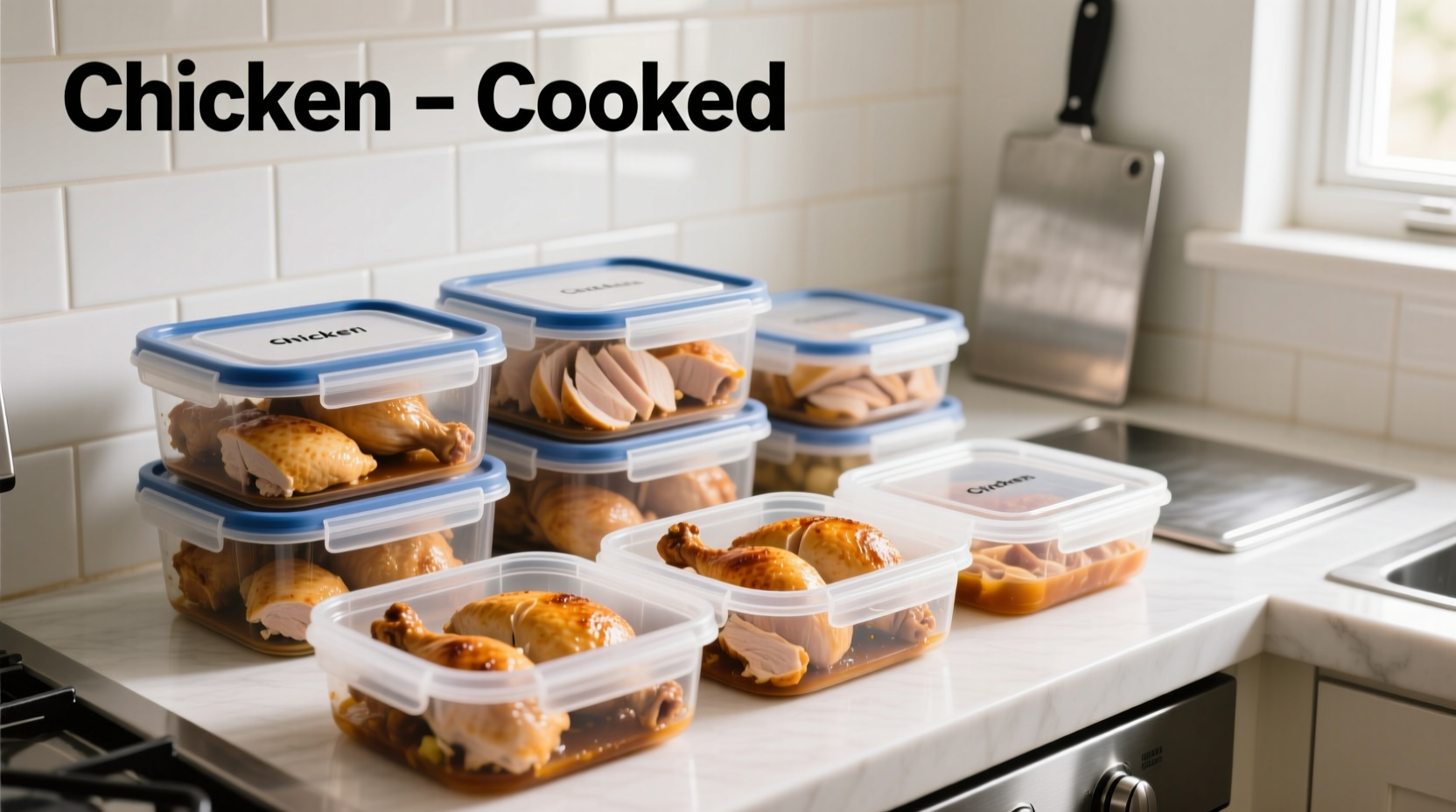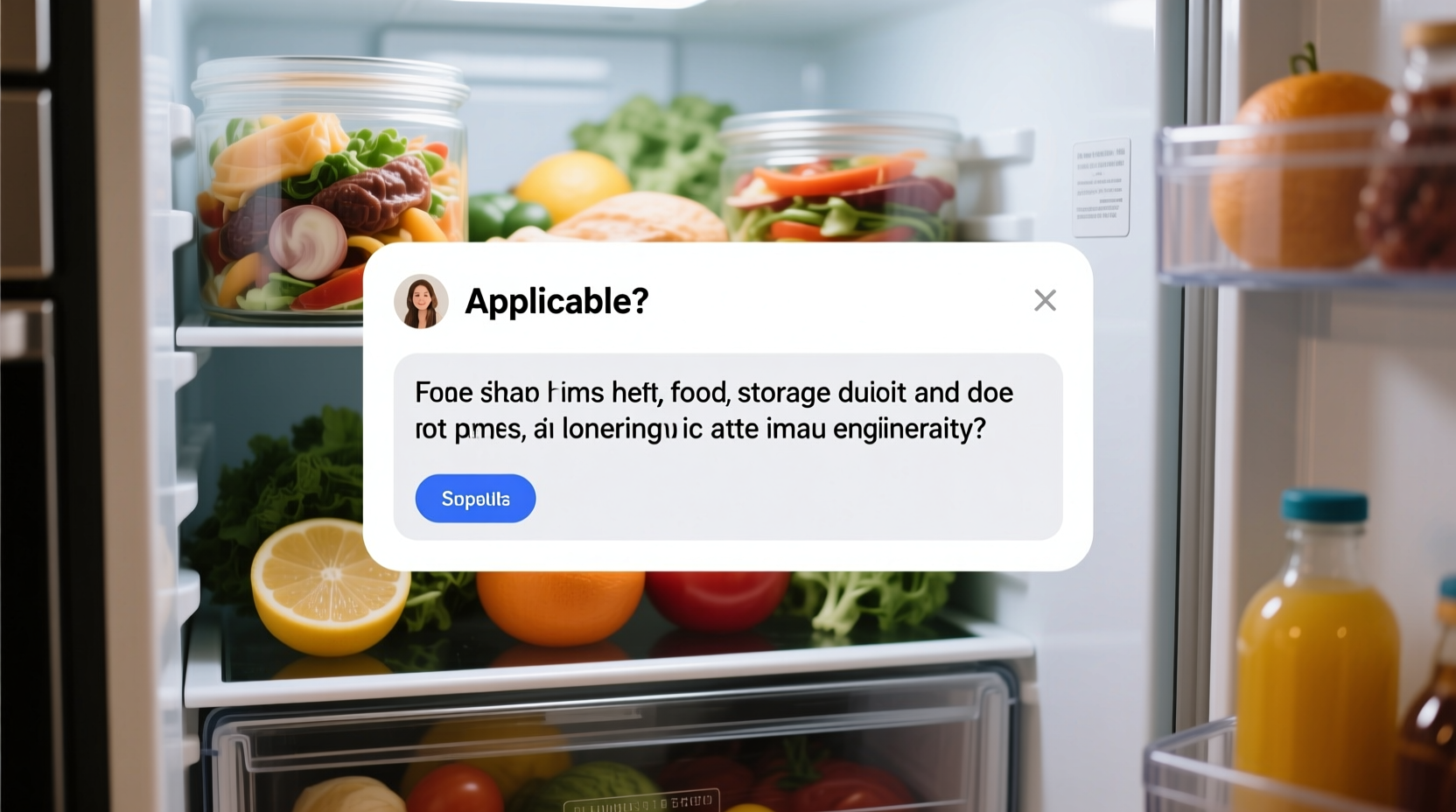Cooked chicken can be safely stored in the refrigerator for 3-4 days when properly stored at 40°F (4°C) or below. This timeframe comes directly from the U.S. Department of Agriculture's Food Safety and Inspection Service (FSIS), the leading authority on food safety in America. Exceeding this window significantly increases your risk of foodborne illness from bacteria like Salmonella and Listeria.
Discover exactly how to maximize freshness, recognize dangerous spoilage signs, and implement professional storage techniques that keep your cooked chicken safe longer. This guide delivers actionable food safety knowledge backed by the latest USDA research and culinary science.
The Science Behind the 3-4 Day Safety Window
Understanding why cooked chicken has such a limited refrigerator lifespan starts with bacterial growth patterns. When cooked chicken enters the "temperature danger zone" (40°F-140°F), bacteria multiply rapidly, doubling in number every 20 minutes under ideal conditions.
| Storage Temperature | Bacterial Growth Rate | Safe Storage Duration |
|---|---|---|
| 32-40°F (0-4°C) | Slow growth | 3-4 days |
| 41-50°F (5-10°C) | Moderate growth | 1-2 days |
| 51-70°F (11-21°C) | Rapid growth | Less than 24 hours |
This critical data from the USDA Food Safety and Inspection Service explains why your refrigerator's actual temperature matters more than the clock. Many home refrigerators operate above the recommended 40°F threshold, accelerating spoilage.
Professional Storage Protocol: From Kitchen to Fridge
How you store cooked chicken determines whether it reaches the full 4-day safety window. Follow this chef-tested protocol:
- Cool rapidly - Divide large portions into shallow containers (no deeper than 2 inches) to cool faster
- Refrigerate within 2 hours - Or within 1 hour if kitchen temperature exceeds 90°F
- Use airtight containers - Glass or BPA-free plastic with tight seals prevents moisture loss and odor transfer
- Store on middle shelf - Avoid door storage where temperature fluctuates most
- Label with date - Use masking tape and marker to note preparation date
"Many home cooks make the critical error of letting chicken cool completely at room temperature before refrigerating," explains Antonio Rodriguez, culinary safety specialist. "This extended time in the danger zone allows bacteria to establish colonies that refrigeration can't eliminate."

Spoilage Detection: Beyond the Sniff Test
Don't rely solely on smell to determine if cooked chicken has spoiled. Pathogenic bacteria like Listeria often don't produce noticeable odors. Instead, use this multi-sensory assessment:
- Visual inspection - Grayish color, mold spots, or unusual slime layer
- Texture check - Slimy or sticky surface (not just natural moisture)
- Smell test - Sour, ammonia-like, or sulfur odors (trust your instincts)
- Time verification - If past 4 days regardless of appearance
The Centers for Disease Control and Prevention reports that 48 million Americans get sick from foodborne illnesses annually, with poultry being a common culprit. When in doubt, throw it out.
Special Circumstances and Exceptions
Certain conditions alter the standard 3-4 day guideline:
- With sauces or gravies - Consume within 2 days as moisture accelerates spoilage
- Restaurant leftovers - Assume unknown storage history; consume within 2 days
- Pre-cooked store-bought - Follow "use by" date, typically 3-5 days after opening
- Freezing option - Properly frozen cooked chicken remains safe for 2-6 months
Food safety standards have evolved significantly over the past two decades. The current 3-4 day recommendation represents a refinement from earlier 5-day guidelines as research revealed previously undetected pathogen growth patterns in cooked poultry. This timeline evolution demonstrates why relying on "what my grandmother did" can be dangerously outdated.
Debunking Common Food Safety Myths
Several dangerous misconceptions persist about cooked chicken storage:
- Myth: "If I reheat it thoroughly, spoiled chicken becomes safe"
- Reality: Some bacteria produce heat-stable toxins that reheating cannot destroy
- Myth: "The sniff test is reliable for determining safety"
- Reality: Pathogens like Listeria often don't produce detectable odors
- Myth: "Clear liquid means it's still good"
- Reality: Natural juices leaking is normal, but combined with other signs indicates spoilage
Remember that food poisoning symptoms often appear 12-72 hours after consumption, making it difficult to connect illness with specific food items. Prevention through proper storage is always safer than relying on detection methods after spoilage begins.
Maximizing Safety: Your Action Plan
Implement these immediate steps for safer cooked chicken storage:
- Verify your refrigerator temperature with an independent thermometer
- Invest in quality airtight containers specifically for leftovers
- Create a dedicated "eat first" shelf for recently cooked items
- Establish a strict labeling system with preparation dates
- When freezing, use vacuum sealing for maximum shelf life
Following these evidence-based practices ensures you're working with the most current food safety knowledge, not outdated kitchen folklore. Your health depends on treating cooked chicken with the respect its bacterial risks demand.











 浙公网安备
33010002000092号
浙公网安备
33010002000092号 浙B2-20120091-4
浙B2-20120091-4